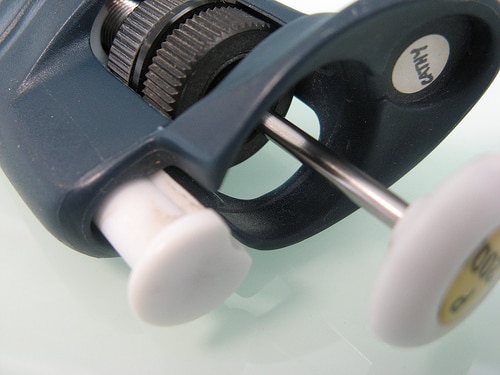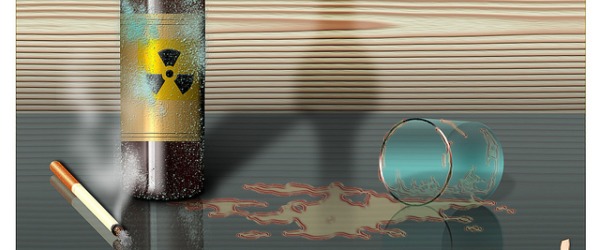If you’re looking to isolate a plasmid and are uncertain about which method to select, let me guide you!
There are several methods for isolating plasmid DNA, each varying in the time required and the quality of plasmid obtained.
The plasmid quality you will need for carrying out sequencing has to be much purer than for a colony PCR. Thus, knowing about the best isolation method for your downstream experiments can significantly enhance your results.
The two most prevalent techniques—alkaline lysis and boiling lysis—each offer specific benefits that can cater to different experimental needs (Table 1).
Enjoying this article? Get hard-won lab wisdom like this delivered to your inbox 3x a week.

Join over 65,000 fellow researchers saving time, reducing stress, and seeing their experiments succeed. Unsubscribe anytime.
Next issue goes out tomorrow; don’t miss it.
Understanding the distinct advantages and processes of each of these methods empowers you to make a confident choice that aligns perfectly with your requirements. This article will provide a clear comparison so you can decisively select the best approach for your DNA extraction needs.
Table 1. Key aspect comparisons for alkaline and boiling lysis methods for plasmid isolation.
Aspect | Alkaline Lysis | Boiling Lysis |
Mechanism | Cell lysis, denaturation and plasmid isolation in presence of alkaline conditions. | Cell lysis and plasmid separation in presence of heat. |
Complexity | Moderate: Requires multiple buffers or performed with kits. | Simple: Requires fewer reagents and steps. |
Yield | High: Suitable for both small and large plasmids. | Moderate: Limited to small plasmids. |
Purity | High: Produces DNA suitable for downstream applications (e.g., cloning, sequencing). | Moderate: May contain more contaminants (e.g., proteins, RNA). |
Time Required | Longer: Neutralization and additional purification steps take time. | Shorter: Quicker but less thorough. |
Applicability | Common for routine and high-purity applications. | Suitable for small-scale, quick isolations. |
How Alkaline Lysis Works
The alkaline lysis method takes advantage of the differences between plasmid DNA, which is small and supercoiled, and chromosomal DNA, which is larger and linear.
This method has been used for years to isolate plasmids from bacteria, such as E. coli. As the name suggests, it involves lysing bacterial cells under highly alkaline conditions in the presence of SDS (sodium dodecyl sulfate).
This strong detergent, combined with high pH, disrupts the cell wall, denatures the chromosomal DNA, and releases the plasmids into the supernatant.
You can read more about how it works in our round-up of miniprep methods.
How Boiling Lysis Works
The boiling lysis method employs heat to break open bacterial cells and denature their cellular components.
In this technique, bacteria are suspended in a solution containing detergent and lysozyme. They are then heated to 100 °C, which disrupts the cell walls, separates the base pairs of DNA strands, and denatures proteins.
However, the plasmid, due to its supercoiled structure, remains intact.
When to Choose Alkaline Lysis
Alkaline lysis is infamous for producing high-purity DNA with minimal contamination, making it a widely preferred method (See Table 2).
Use alkaline lysis when:
1. You Require High-purity DNA
When conducting experiments that require pure plasmid DNA, free from RNA, proteins, and genomic DNA, the alkaline lysis method is beneficial. Use it for applications where contamination is particularly problematic, such as:
- Transformation;
- Restriction enzyme digestion;
- Preparing plasmids for mammalian cell transfection;
- Generating DNA for cloning;
- Extracting high-quality plasmids for genome sequencing.
2. You Work With a Diverse Range of Plasmid Sizes
Alkaline lysis works well with all small, medium, and large plasmids. Boiling lysis, in contrast, is less effective for large plasmids, as heating can cause potential degradation. This method works well for:
- Isolating large plasmids like BAC (Bacterial Artificial Chromosomes);
- Extracting high-copy or low-copy plasmids.
3. You Need Large-scale Plasmid Preparations
Alkaline lysis is a good choice in terms of scalability. Be it miniprep (1-5 mL), midiprep (10-50 mL), or maxiprep (100-500 mL), this method suits them all. Some applications include:
- Isolating and purifying large amounts of plasmid for industrial use;
- Preparation of plasmid stocks for long-term storage.
4. Your Plasmid DNA Must be Contamination-free
Boiling lysis often leaves contaminants (RNA, proteins, and chromosomal DNA), which can hinder your results. Alkaline lysis, on the other hand, includes RNAse treatment as well as chromosomal DNA separation for high purity. Due to its higher purity, alkaline lysis can be used for:
- Plasmid DNA purification for crystal structure studies;
- Preparing pure plasmid stocks for synthetic biology applications.
When to Choose Boiling Lysis
Boiling lysis, on the other hand, is a quick and inexpensive plasmid isolation method. Although it doesn’t provide high-purity DNA, it is an ideal choice for rapid screening and routine molecular biology tasks (Table 2).
Use boiling lysis when:
1. You Need Your Plasmid Quickly
The entire process takes much less time than alkaline lysis. It is convenient for time-sensitive applications, such as colony screening or quick diagnostic tests. This method can be used in:
- Rapid screening of transformants after ligation;
- Quick plasmid preparation for restriction digestion verification.
2. You Need to Keep Your Lab Work Simple
Boiling lysis requires fewer steps and minimal reagents, making it accessible for basic labs or fieldwork as compared to alkaline lysis, which requires expensive buffers and commercial kits.
3. You Need Small-scale Preparations
This method is mostly effective for minipreparations and works well with smaller plasmids (<15 kb in size). For situations where only a few micrograms of plasmid DNA are needed, boiling lysis offers a convenient solution.
4. Your Concern is Not High-purity DNA
While boiling lysis may introduce RNA and protein contaminants, which can limit its use in sensitive experiments, it remains a valuable technique in situations where high purity is not critical. Some examples include:
- Preparing plasmids for colony PCR or restriction mapping;
- Checking for successful plasmid transformation.
Table 2. Summary of which plasmid isolation method is suitable for which types of experiments. (Source: Steffi Khatol 2025.)
Use Case | Preferred Method |
High-purity DNA for cloning or sequencing | Alkaline Lysis |
Routine plasmid isolation for analytical purposes | Alkaline Lysis |
Quick and inexpensive screening of plasmid inserts | Boiling Lysis |
Experiments where high purity is not a concern | Boiling Lysis |
Special Considerations
While the boiling lysis method is generally effective for many bacterial strains, it’s important to note specific exceptions. For instance, strains of E. coli that release significant amounts of carbohydrate upon exposure to detergents, lysozyme, and heat—such as E. coli strain HB101 and its derivatives—are not ideal candidates for this method.¹
Additionally, the boiling lysis method is not advisable for strains of E. coli that express endonuclease A. This is because endonuclease A is not always completely inactivated during the boiling process, leading to the degradation of plasmid DNA during subsequent incubation in the presence of Mg²⁺.
Alkaline Lysis vs. Boiling Lysis Summarized
When isolating plasmids from bacteria, researchers often turn to two effective methods: the straightforward boiling technique and the thorough alkaline method. This article has provided a constructive comparison of both approaches, highlighting their respective advantages and disadvantages. By understanding these key aspects, you can make an informed choice that aligns with the specific goals of your experiment, ensuring a successful and efficient plasmid isolation process.
For more amazing tips and tricks, check out our DIY in the lab hub.
References
- Sambrook J. (2012). Molecular cloning: a laboratory manual. (4th ed.) Cold Spring Harbor, N.Y. Cold Spring Harbor Laboratory Press
You made it to the end—nice work! If you’re the kind of scientist who likes figuring things out without wasting half a day on trial and error, you’ll love our newsletter. Get 3 quick reads a week, packed with hard-won lab wisdom. Join FREE here.








